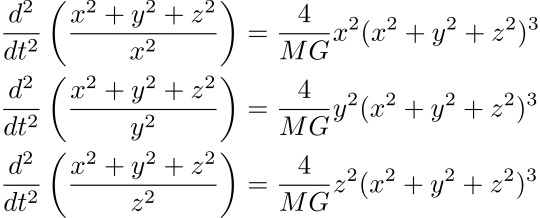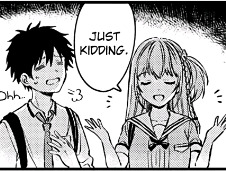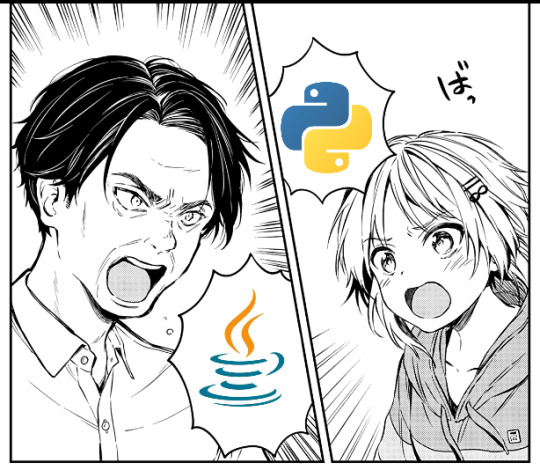I want to post some of my explorations into the everything. Not a professional.
Don't wanna be here? Send us removal request.
Text
Typesetting and Document Formatting
In the spirit of Technology Connections' No Effort November, I'm going to somewhat shoddily type out some of my thoughts on this, mostly for future reference.
Have you ever had to make a 'document'? Usually it boils down to something that gets turned into a PDF, something printable at least. Generally they're not made to be adaptable to screen sizes, but rather to some standard of aspect ratio, margins, letter types etc.
If you're not using a printing press for this (kudos if you are, please send pictures), you probably use a computer program for it. For most people, this will be Word from Microsoft's Office suite (do they still market it like that?). Some people might use Google Docs, and Apple probably has a comparable program. I personally call these programs 'typesetters'.
They suck to use.
They're extremely opaque, only presenting some basic elements to the user (headers, lists, tables, etc), with no upfront indication of where those elements should go, and what their sizes and margins are exactly. The rules for when something wraps, or moves down a line, or gets moved aside, etc, are also very unclear, and because it all seems to be calculated from a single origin, one small font size change can entirely mess up your project three pages down. This all is not even mentioning images (although tables got a brief mention), or any formatting beyond 'wall of text with particular alignment'. When such 'advanced' formatting is possible at all, it is three times more finicky and opaque.
People might say "Well you have to really learn a tool to get good at it!", but the typesetters in question don't present themselves as one tool with a particular paradigm. They present a couple features that the typesetter's internals can do something funny with when they're used (and it usually does not share your sense of humour). Learning a tool like that is extremely unnatural for people like me, because there is no solid ground to stand on in terms of operational paradigm.
There is an existing alternative to this, and that is the markup language. Popular examples are HTML and Markdown, but particularly relevant here are the ones popular for use in academia, like LaTeX/TeX (mostly only LaTeX, but Typst deserves an honourable mention). These are great, as they give very explicit and direct control to the user, and almost every aspect of the formatting and layouting. On top of that, the languages have a (usually small) learnable core syntax. In my opinion, such markup languages are superior to the common 'What You See Is What You Get' (WYSIWYG) typesetters.
However, they're still not really great to use for layouting. They become esoteric quickly when you start looking into how things are managed, with legacies going frighteningly far back. Images still move your text, or the other way around, or both.
Markup Languages are not the ultimate answer.
While the Typesetters are built on shaky ground, the Markup Languages live too much in the dirt. Raw text is largely one-dimensional, and allows for a limited second dimension for slight nuance. A markup language has to contain:
Content positions and sizes (sometimes in 3D if you count multipage content like that)
Content text
Content colours and styles
Possible origins of the content on disk
Most of these are not in their 'native' language, and thus a markup language will always have to sacrifice either the clarity and ease of the content text, or that of the metadata text.
(As an interesting aside, raw text languages make more sense for interactive UI, because as far as we know, ordered instructions are clearest in a linear textual format.)
So what now?
I've thought about it a lot, and it has puzzled me for a while that doing such layouting has become so frustrating and convoluted. I think the main problem (as given earlier) is how opaque it has become, and not so much that it's an inherently difficult problem. It's very straightforward to do on a typewriter, for example.
I think these typesetters should look more like either image editors, or likely better, parametric CAD design tools (at least optionally).
Another fun idea I had is a 'rectcut' typesetter.
In it, the limits and positions of different types of content is entirely given by the arbitrary subdivision of rectangles, with layering like an image editor. So, you start with your paper size, and then you (for example) give margins by subdividing in three horizontally, then vertically, and setting those boxes to required size. This can be done fractionally or in absolute units (both should be possible). You could then further subdivide to make a little box just to the side, which you can select as 'image content', and a box below with some info. Then the other space you can select for 'text content' or maybe you want a title, so you make a box, and put in your title, etc.
Line or page numbering, tables, headers, indentations, footers, graphics, it all becomes something that slots in way more straightforwardly.
In my mind, this is rectilinear/axis-aligned subdivision, but one could argue there is value in expanding beyond that (I have certainly seen posters and books that could use it)
A small disclaimer:
I haven't looked at the history of typesetters or layouting/graphic design tools yet, and I don't know about all the options that are out there, so do let me know if you know of something similar as some of the things I described (I believe Adobe (I cry) might have some, but I wouldn't want to use those regardless).
All of my problems outlined are also at least a little bit a 'me-problem'. In general, it is difficult for me to adhere to someone else's workflow, and such programs definitely require a certain workflow that is not my own.
Thanks for reading!!
#typesetting#text editors#Word#LaTeX#Typst#things I want to build but am too tired to do#(why must the pdf spec be such a pain)
2 notes
·
View notes
Text
I love the simplicity of this, even if it's kinda scary how it implies Apple was onto something with their Vision Pro control scheme
Controller-less VR teleportation
For my study, I am currently working with a team of other students on a VR experience for a local museum.
The museum plans to have a VR headset somewhere, which visitors can put on to experience how life was like in the past.
There are lots of things to show, so the user needs some way to move from one place to another.
Sometimes, this is done with a Controller, where the user can move the joystick, which moves the camera around the virtual world.

This has a big problem, however: such smooth movement in VR is incredibly nauseating for people who are not accustomed to it, which is definitely most museum visitors.
As such, game designers in the past invented the now common mechanic of teleportation. You point the controller somewhere, click a button, and you get teleported to where you were pointing. The range is usually not very large, to keep it balanced. I have also seen a slightly different mechanic in some VR games, where there isn't a button to teleport, but it is the joystick. You point the joystick somewhere, and you can choose which direction you want to end up in after the teleport.
The concern is that this can be a bit tricky to learn how to do.
Especially if we decide to not use any controllers. To keep things simpler, we would like to not need controllers. Putting on the headset is already complicated enough, and we need to keep this experience as accessible as possible. Controllers can also get stolen or damaged.
Luckily, there are ways to do this teleportation with hand gestures only!
However, these gestures are even more complicated than the controller buttons for it.
So we racked our brains over a really nice way to handle moving around the environment.
Finally, I had an idea!
We can designate specific Points Of Interest in the environment, which will be the only places the user can be at. Then to move from one POI to the other, the user can just look over to such a POI, and they will teleport to it.
Of course, that teleportation should not be instant, otherwise that will still be confusing and disorienting.
So if the user looks at a POI, a small animation will play in front of them to show that something will happen shortly. (If they look away again, the countdown and whole teleportation process will be cancelled, naturally. They really need to stare at the POI for a solid few seconds, to make sure they really want to do it.)
After that animation finishes playing, the screen will fade to black and back. During the darkness, the user will have been teleported. The teleportation is not instant, again, to prevent disorienting the user.
I mocked up a small visual example of how this system could look like in Blender, and showed it to my team. They unanimously agreed with the system! 🥳
Here is that animation:
You will see that the Points Of Interest are marked with blue holograms, which become taller if the user looks near them.
We are not entirely sure if this part will remain this way, as the museum really wants the experience to be as purely realistic as possible.
4 notes
·
View notes
Text
Fluid Sim Failing but In Progress

2 notes
·
View notes
Text
I lost

I'm not saying I'm a mad scientist but sometimes I do think about kidnapping random people into a featureless white room where I won't let them out until they solve a simple puzzle game without instructions.
There's no saw trap to kill them if they fail, they just gotta keep trying until they figure it out. And I guess if they can't figure it out after like 8 hours I'll let them out anyway
3K notes
·
View notes
Text
I'm still working on programming languages, though it has evolved quite a bit
Blogging about it should be fun
Have a somewhat unrelated meme

32 notes
·
View notes
Text

250 likes!
Alright then didn't know this was a thing right ok alright
1 note
·
View note
Text
I wake up and I think compiler thoughts.
2 notes
·
View notes
Text
Goodness I just re-read what I wrote a while back and I like it!
Of course I was the one who wrote it, and I am very familiar with my own thought processes, so it's going to be easier for me to follow. That's something I need to look out for.
1 note
·
View note
Text
Just made a calculus exam, absolutely failed it, completely sleep deprived.
Wierdly motivated to get some movement in Gmd again.
1 note
·
View note
Text
Little Endian > Big Endian
such is my opinion, thank you for listening
3 notes
·
View notes
Text
I KNEW IT

That is how it should be.
I threw a couple of tests against my first one (what if q = r, what if r is constant), and saw that it produced really incorrect results, so I examined my derivation and saw all sorts of mistakes, and subsequently fixed them.
And so we have the new and improved version, which passes both of those tests with flying colours!
* innocently and naively tries to use the Euler-Lagrange equation without any proper training *
AAAAAAAAA WHAT THE FUCK

And this one had a relatively simple Lagrangian...
(here's the neat and condensed version btw:)

In a few days I'm gonna look back at all this and see how insanely wrong I was.
2 notes
·
View notes
Text
* innocently and naively tries to use the Euler-Lagrange equation without any proper training *
AAAAAAAAA WHAT THE FUCK

And this one had a relatively simple Lagrangian...
(here's the neat and condensed version btw:)

In a few days I'm gonna look back at all this and see how insanely wrong I was.
#Why did I even think I was prepared for this#I don't even know if I did it correctly#variational calcu- HELLHOLE#physics#math
2 notes
·
View notes
Text
Ofc I also made more memes about that thing I'm working on, what I call the G-method


Neverbeforeseen content yesyes
I was reading 'Fukakai na Boku no Subete o' (a pretty interesting/nice manga (yes I read manga I'm sorry to disappoint)), and one panel gave me a idea
Anyway now I have a bunch of stupid programming memes:


^ That's based on me and a friend bashing Python every once in a while, much to the dismay of another friend, who thinks it's pretty useful (and to be fair, he's not wrong).
That first friend uses/used more Java than Python (by approximation, please don't get mad at me, unnamed friends), so I also made this one:

And then me:

Blessing and a curse.
Bonus panel about object oriented programming (an edit I'm really proud of):

40 notes
·
View notes
Text
I was reading 'Fukakai na Boku no Subete o' (a pretty interesting/nice manga (yes I read manga I'm sorry to disappoint)), and one panel gave me a idea
Anyway now I have a bunch of stupid programming memes:


^ That's based on me and a friend bashing Python every once in a while, much to the dismay of another friend, who thinks it's pretty useful (and to be fair, he's not wrong).
That first friend uses/used more Java than Python (by approximation, please don't get mad at me, unnamed friends), so I also made this one:

And then me:

Blessing and a curse.
Bonus panel about object oriented programming (an edit I'm really proud of):

#programming#python#java#assembly#programmer humor#Fukakai na Boku no Subete o#manga#memes#object oriented programming
40 notes
·
View notes
